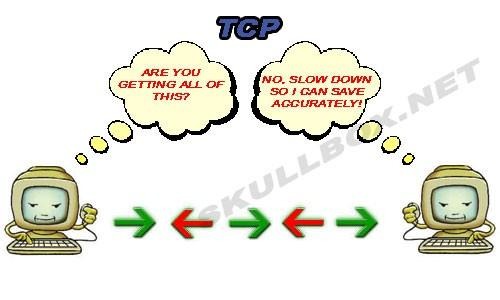Google's QUIC Protocol Talks UDP For A Faster Internet
With today's Internet generation, a delay of a few seconds can already mean lost audiences, and money, for businesses. That's why the industry is always on the lookout for faster connections. But the answer isn't always in faster lines or faster networks, Sometimes, the are solutions in the way we communicate over those lines as well. Google's experimental QUIC protocol is one such new communication method that tries to get data across faster by using a language that is already in use on the Internet but not widely known: UDP.
Majority of Internet data travels over a combination of TCP, or the Transmission Control Protocol, and IP, for Internet Protocol. But another protocol is also in use, particularly in gaming, streaming, or VoIP. This is UDP or the User Datagram Protocol. The core differences between TCP and UDP are reliability and speed. TCP sacrifices speed in order to ensure that data from the sender does reach the receiver, sometimes doubling back or resending packets just to do so. UDP, on the other hand, prioritizes speed at the expense of not really checking if the packet has been properly received. That is why it is the preferred protocol of such low-latency services.

Google's QUIC, which stands for Quick UDP Internet Connection, obviously espouses the latter, but not for those usual cases but for things that use TCP/IP normally. That means, things like simply browsing the web. Google has slowly been experimenting with QUIC through its Chrome browser, serving half of the data requests from the browser through QUIC. In this instance, the biggest advantage that QUIC has to offer is what Google calls "zero round trip". Normally and especially with the inclusion of secure TLS in the mix, communication between browser and server makes a few back and forth round trips before the browser can even ask for a certain web page. With QUIC, however, if a browser has already talked to a server before, it will do away with the round trips and start asking/serving up pages directly.

According to Google, this allows a 3 percent increase in speed when loading web pages. That might not sound like much, but it all adds up in the end. In theory, this would mean near zero latency, faster browsing speeds, and fewer buffering on videos. Sounds all good right? However, those benefits are only limited to those using Chrome, but Google plans to soon switch over its products and apps, even mobile ones, to using QUIC to benefit even more people.
And that's not all. Google plans on proposing QUIC, particularly HTTP/2 over QUIC, as a new standard for the Internet, but only after some much needed housecleaning. Google took a similar path when it helped integrate SPDY, something it started in-house, into what eventually become the new HTTP/2 standard. Whether or not QUIC displaces TCP/IP is still too early to tell, especially given how the old but venerable protocol serves as the most common language on the net.
SOURCE: Google
Images from Skullbox.net
